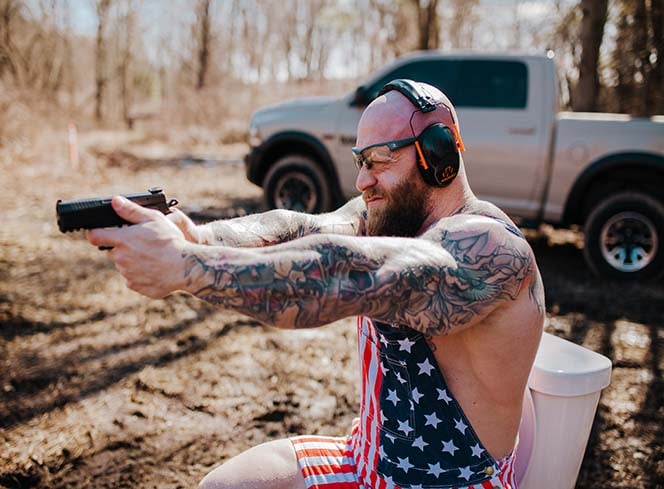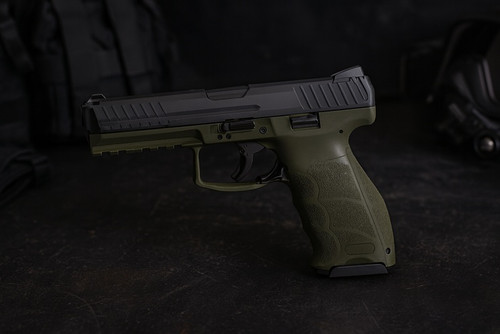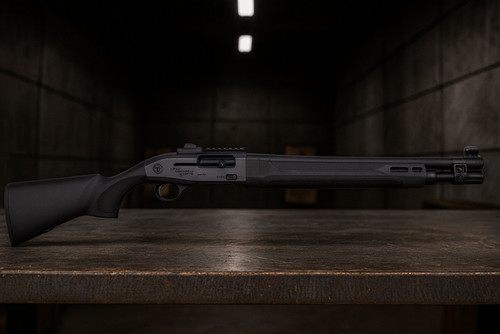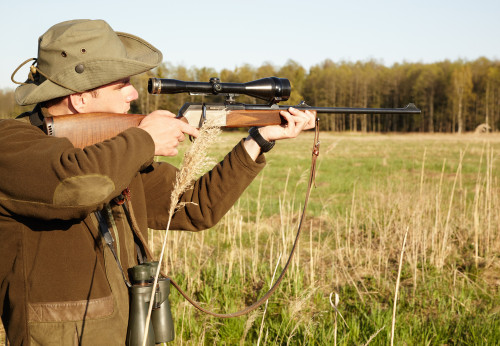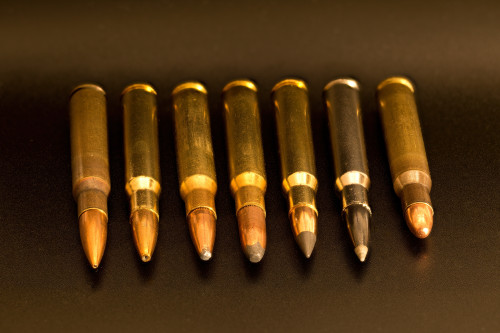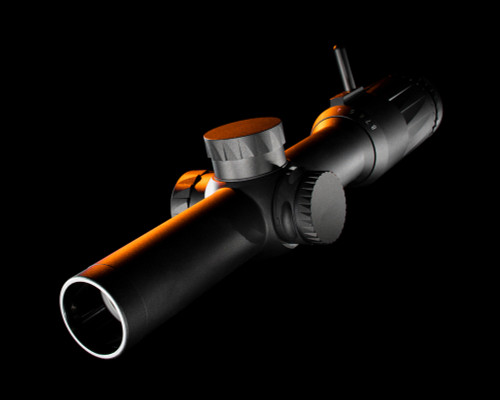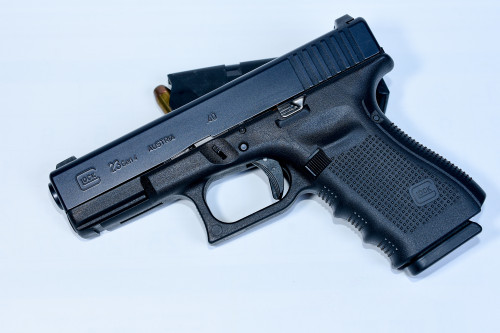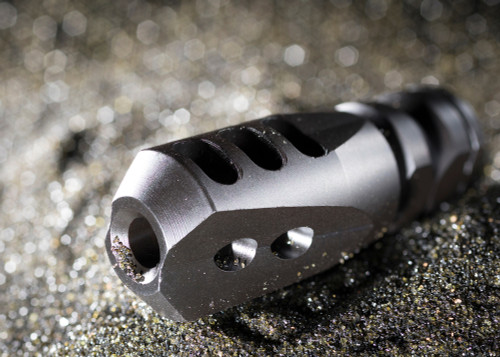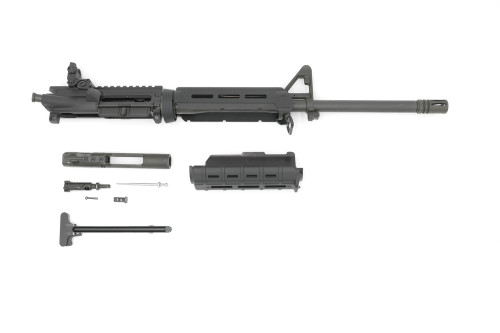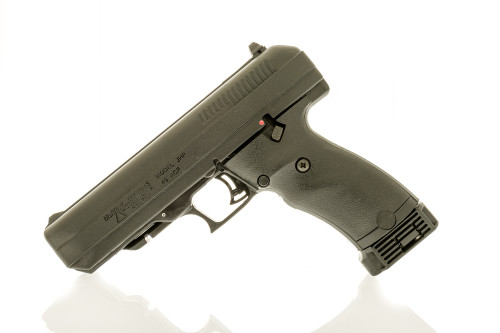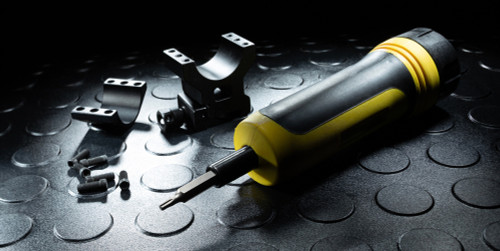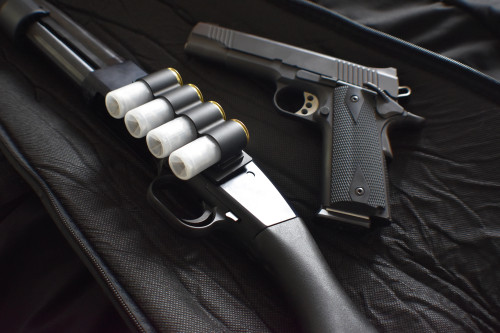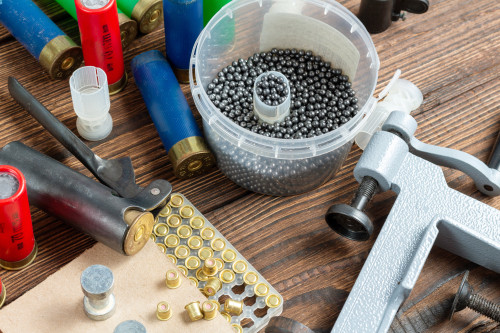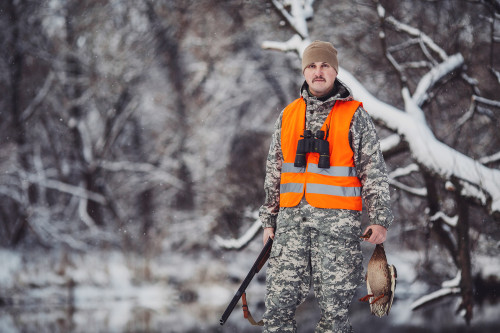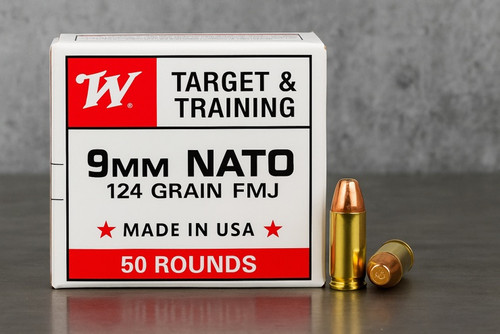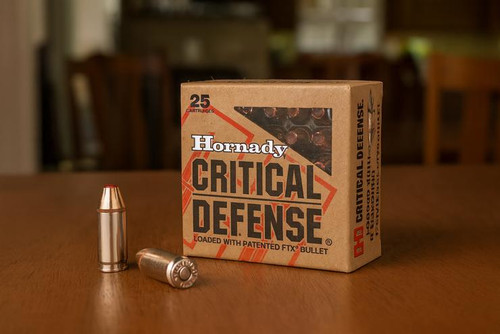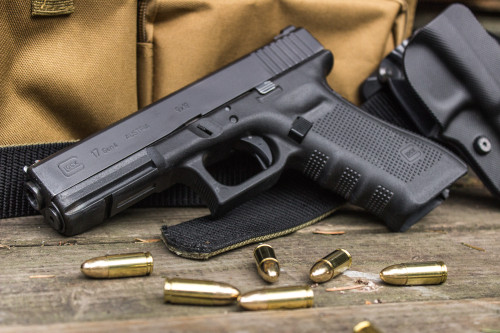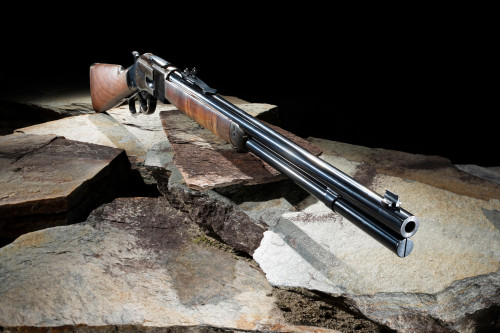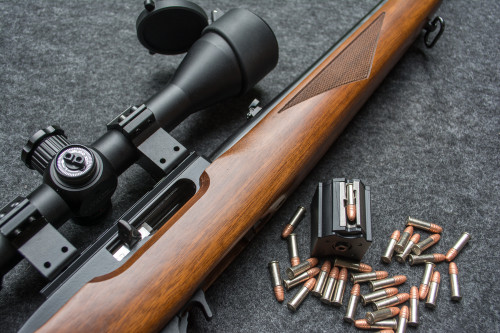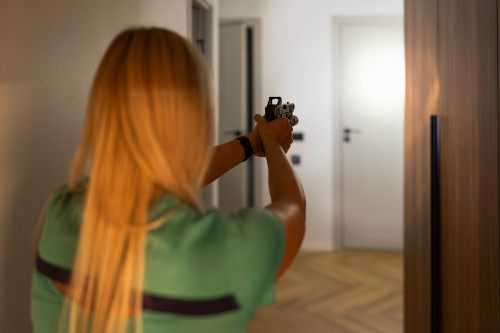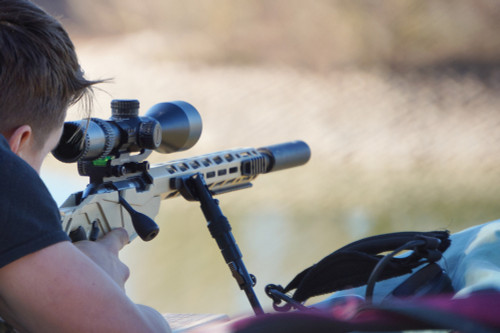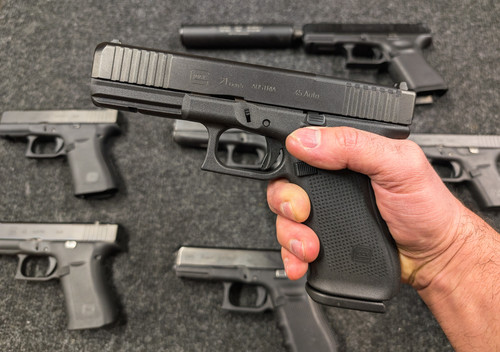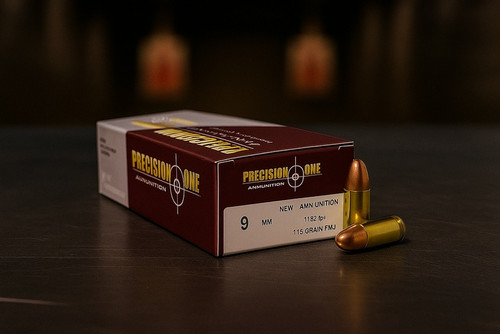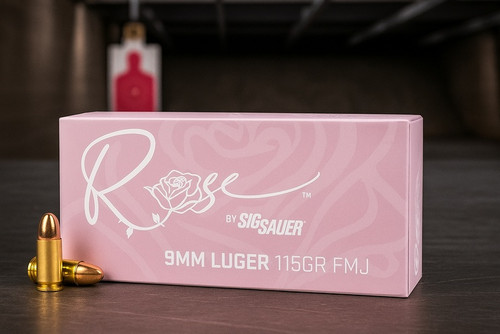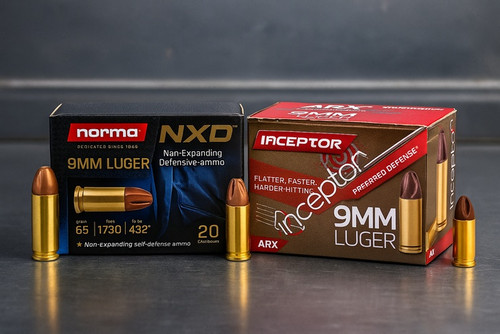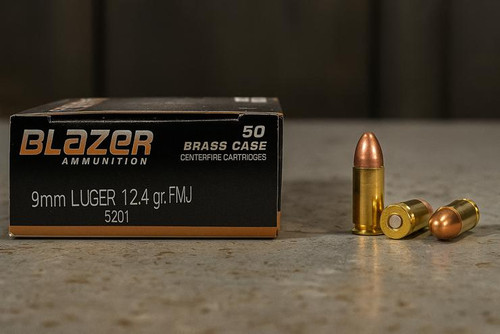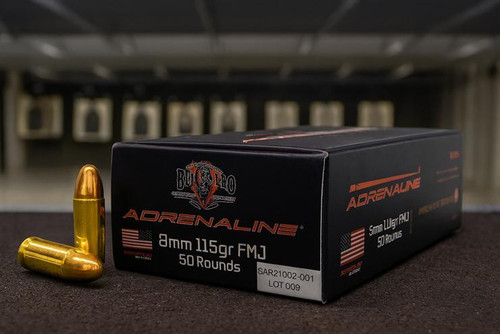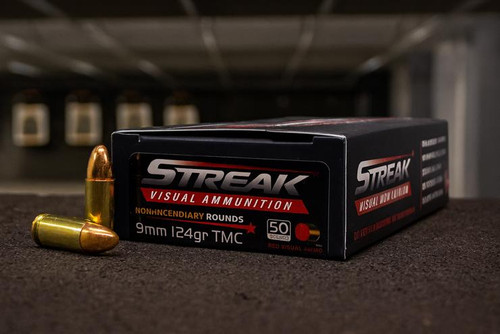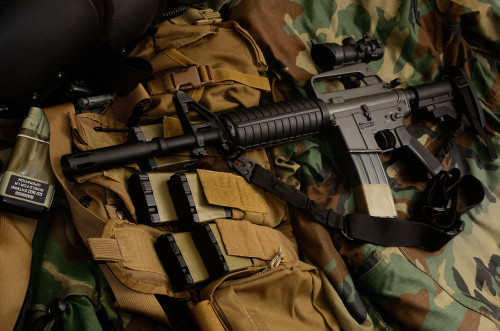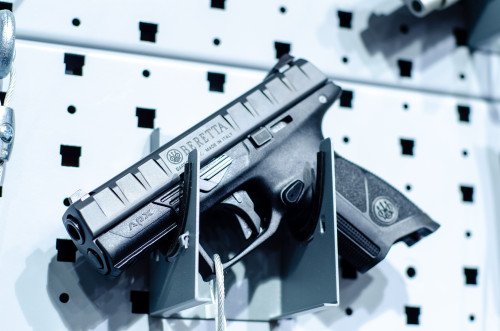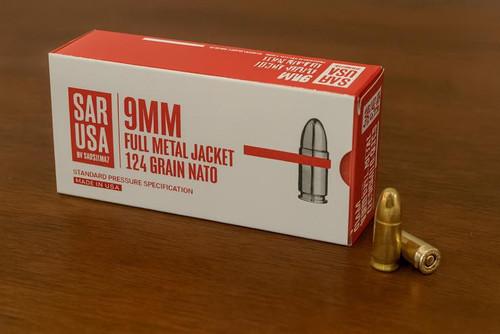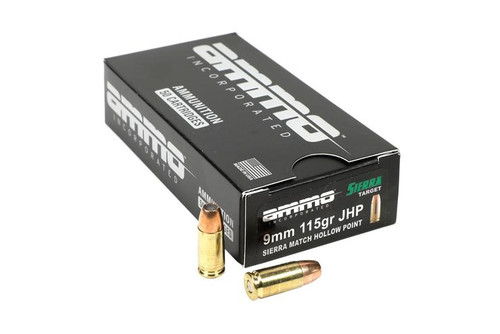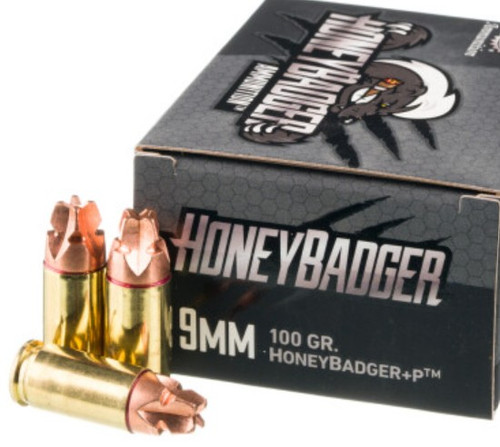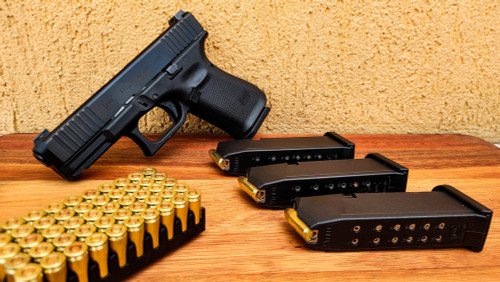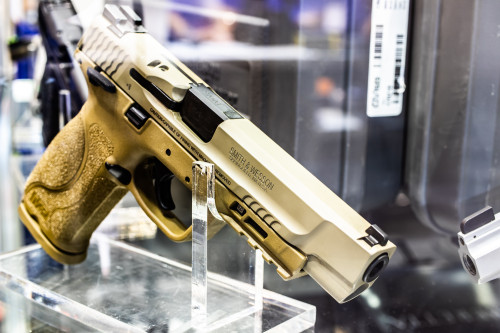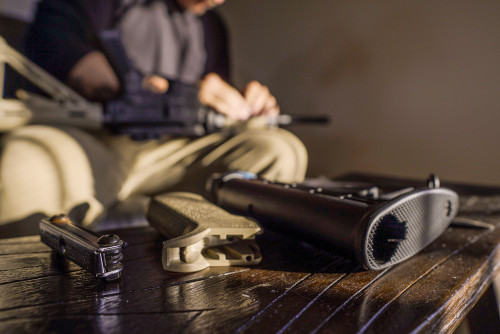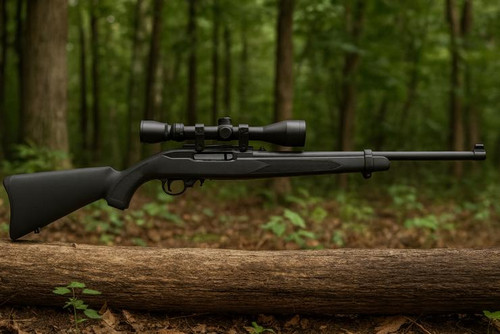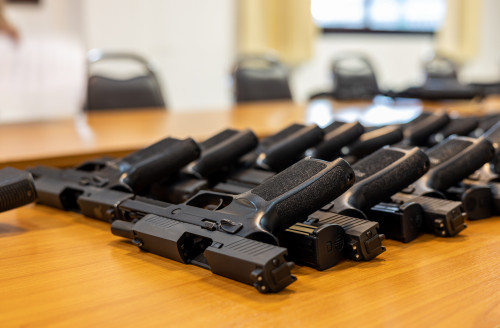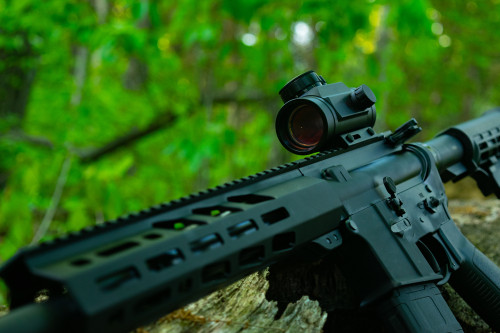Quick Answer
The .50 BMG shines for extreme-range and anti-materiel roles. Top rifles: Barrett M82A1 (semi-auto icon), Accuracy International AX50 (precision bolt), Serbu BFG-50 (budget), Safety Harbor SHTF-50 (AR upper), ArmaLite AR-50A1 (accurate single-shot), Barrett M95 (compact bullpup bolt). Top ammo: Hornady Match 750gr A-MAX (availability can fluctuate; check current stock), PMC X-TAC Match 740gr FMJ-BT; plinking: PMC Bronze 660gr FMJ-BT. Reloading cuts cost and lets you tune loads.
Key Takeaways
- .50 BMG is expensive; plan for rifle, optic, and ammo budgets.
- Semi-auto vs bolt: choose recoil profile and precision needs.
- Match ammo matters beyond 1,000 yards.
- Reloading slashes cost per shot over time.
- Verify local legality and range backstop requirements.
The unmistakable THOOM of a .50 BMG round is unlike anything else at the range. This massive cartridge sits at the upper edge of what most civilians can buy. It brings extreme reach and strong ballistics for anyone ready to invest in the platform and the ammo it needs.
Quick Picks
- Editor's Pick: Barrett M82A1 (semi-auto legend; 20/29" barrels; 10-rd mag).
- Precision Winner: Accuracy International AX50 (bolt, 27" barrel).
- Best Budget .50: Serbu BFG-50 (single-shot bolt).
- AR-Compatible: Safety Harbor SHTF-50 (mag-fed bolt upper; 18/22/29").
- Value Single-Shot: ArmaLite AR-50A1 (30" barrel, superb brake).
- Compact Bullpup: Barrett M95 (29" barrel, 5-rd mag).
- Match Ammo: Hornady 750gr A-MAX; PMC X-TAC Match 740gr.
- Plinking Ammo: PMC Bronze 660gr FMJ-BT.
- Reloading Bullets/Brass: Hornady A-MAX bullets; Hornady .50 BMG brass.
.50 BMG in Context
A Brief Origin Snapshot
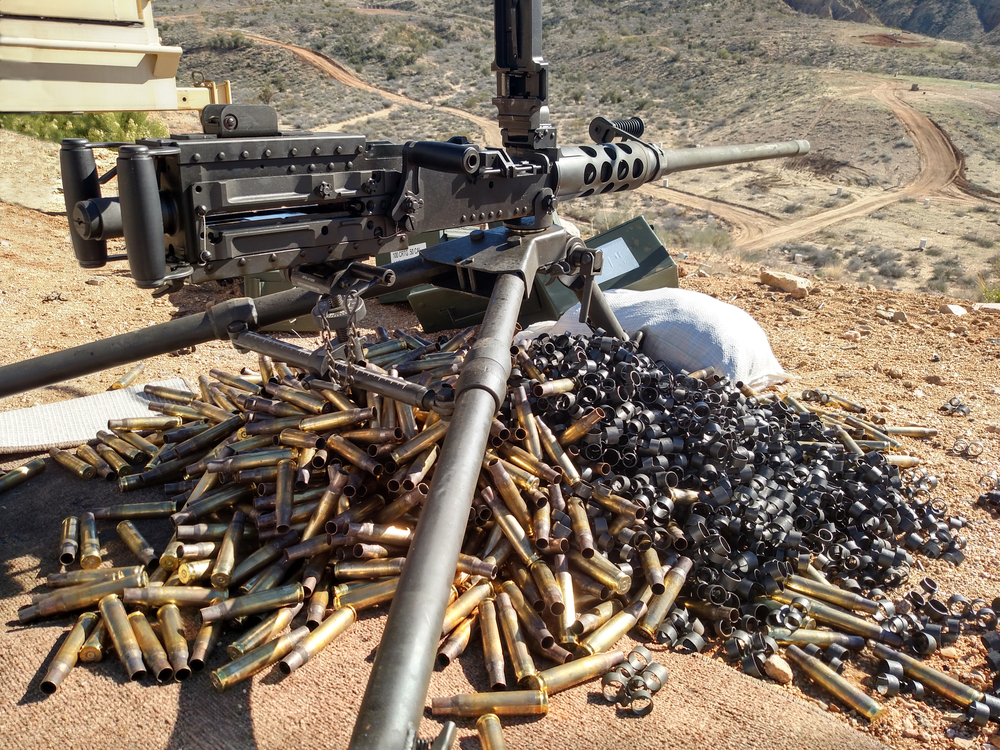
The .50 BMG (Browning Machine Gun) came from a clear military need. In World War I, John Moses Browning scaled up the .30-06 Springfield. The goal was simple and direct—build a round that could hit hard against aircraft and gear on the ground. The cartridge paired with the Browning M2 machine gun and formed a lasting team across many wars and many roles.
Power is the point. Military test data for AP/SLAP projectiles show substantial penetration of rolled homogeneous armor at a few hundred meters, but results vary with projectile and plate spec; don’t assume a single universal number. That single line shows what this round can do in the field and why it still matters.
Modern Roles & Civilian Appeal
Today, the .50 BMG runs in two clear lanes. In service, it feeds heavy machine guns and long-range anti-materiel rifles. For civilians, it remains the largest common cartridge you can buy in many states without special tax stamps or extra permits.
The draw is clear. You get mile-plus reach with the right setup and skill. You get a strong terminal effect on distant steel and other targets. And yes—you get the half-inch slug that lands with real authority and leaves a mark.
With that comes duty. As the advocacy group Violence Policy Center argues, a .50 can threaten lightly armored targets at long range; their description is controversial but underscores why backstop selection is critical. That line shows the power—and the care—you must bring to ownership and range use every time.
How to Choose a .50 BMG Rifle
Buying a .50 BMG is not like grabbing a new hunting rifle. These are specialized tools with unique factors to weigh:
Action type: Semi-auto options like the Barrett M82A1 spread recoil over time, which makes shooting more comfortable, but often at the cost of ultimate precision. Bolt guns usually offer tighter accuracy potential, yet they hit harder on the shoulder when fired.
Barrel length: Common barrel lengths run 18–30 inches (a few heavy target models stretch longer). Longer barrels generally deliver higher velocity, though they add weight and change handling. A 29–30" barrel often strikes a solid balance between ballistics and practical use on the line.
Weight & recoil: These rifles typically weigh 18–35 pounds for good reason—physics needs mass to soak up the tremendous recoil. Lighter rifles carry easier, but they can punish you at the range and slow follow-up shots.
Use case: Be honest about your goals. Do you want to ping steel at extreme ranges? Do you plan light .50 BMG range days for fun? Or are you building a precision long-range setup? Let your real plan guide your choice.
Budget tiers: Entry-level single-shots start around $2,500. Mid-tier options run $3,500–$7,000. Premium precision platforms can exceed $13,000—before optics, mounts, and bipods.
Best .50 BMG Rifles
Accuracy International AX50
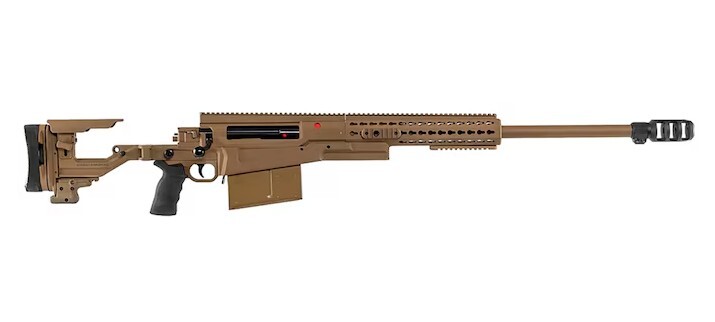
The Accuracy International AX50 stands at the top of bolt-action .50 BMG precision. Built by the same maker behind many front-line sniper systems for military and law enforcement worldwide, the AX50 brings match-grade accuracy to the .50 BMG platform in a proven package.
Everything about this rifle points to precision—from the 27-inch barrel to the carefully engineered chassis system. At roughly 26.5 pounds, it is substantial yet manageable for a dedicated precision user who wants stable positions and repeatable results.
The adjustable stock and cheekpiece let you tailor the fit to your shooting position. That fit is critical for consistent long-range work over long strings of fire. The ergonomics borrow from AI’s battle-proven designs that have anchored top sniper platforms for decades.
Pair this rifle with quality match ammunition and it delivers at extreme distances. The tactical muzzle brake does strong work to tame the heavy recoil. That control helps you stay on target to spot your own impacts—key for quick, correct adjustments at range.
Price: $13,776 (reference point from retailers)
Features
- 27" barrel; rifle ~26–27 lb depending on config.
- Adjustable stock/cheek
- Tactical muzzle brake
- Chassis rigidity for consistency
Pros
- Precision-first design
- Excellent ergonomics for prone/bench
- Outstanding build quality
Cons
- Premium price tier
- Heavier than some competitors
- Requires top-tier optics to realize potential
Serbu BFG-50

The Serbu BFG-50 stands as the gateway drug to .50 BMG ownership. This no-frills, single-shot bolt-action gets you into the game without emptying your savings account.
At its core, the BFG-50 focuses on simple functions over fancy features. The bolt design is robust and straightforward, with extraction and ejection that work reliably even with hot-loaded rounds. Available in both standard and heavy barrel configurations, you can choose between a more portable package or maximum accuracy potential.
The standard model weighs around 18 pounds—light for the class—but the 36-inch heavy barrel variant tips the scales at 26 pounds. This makes the standard model somewhat punchier in the recoil department, but also more practical to transport and set up.
For folks who just want to experience the thrill of .50 BMG shooting without mortgaging their home, the BFG-50 delivers a functional, durable platform. It may lack the refinement of pricier options, but it goes bang when you pull the trigger and puts rounds on target with respectable accuracy.
Price: $2,520–$2,595
Features
- Single-shot bolt
- OAL 51.5" (standard) or 56.75" (36" barrel).
- Stout receiver and bolt design
Pros
- Lowest barrier to entry
- Durable and straightforward
- Good platform to learn .50 BMG
Cons
- Slower single-shot cadence
- Limited out-of-box precision vs match guns
- Recoil management depends heavily on brake and form
Barrett M82A1

The Barrett M82A1 is the icon that most people picture when someone mentions ".50 caliber sniper rifle." This semi-automatic beast has starred in movies, video games, and actual combat operations worldwide. If you've ever seen a .50 BMG rifle in the media, chances are it was this one.
What sets the M82A1 apart is its short-recoil, semi-automatic action. Unlike bolt guns, the Barrett uses a recoiling barrel design that spreads the massive recoil impulse over time. It makes it surprisingly shootable despite its power. Short-recoil semi-auto with 20" (CQ) or 29" barrels and 10-rd magazine; typical system weight ~29–32 lb.
The 10-round detachable magazine gives you follow-up capability that single-shots can't match. The M82A1 weighs between 29-32 pounds fully loaded, which helps absorb recoil but does make it a commitment to transport. Its military heritage shows in every aspect of the design—from the robust carry handle to the effective muzzle brake.
For many buyers, this is the ultimate range-day conversation starter. It combines history, functionality, and raw power in a package that's become legendary in both military and civilian circles. No wonder it remains Barrett's flagship product decades after its introduction.
Price: $9,500–$10,000 (seen as low as $8,995 at times)
Features
- Semi-auto, short-recoil system
- 20"/29" barrel options
- 10-round magazine
- Robust receiver and brake
Pros
- Softer perceived recoil for caliber
- High fun factor and practicality for training
- Proven platform
Cons
- Heavier package (29–32 lb)
- Expensive to buy and feed
- Needs serious backstop and range accommodations
Safety Harbor SHTF-50 (AR-15 Upper Conversion)
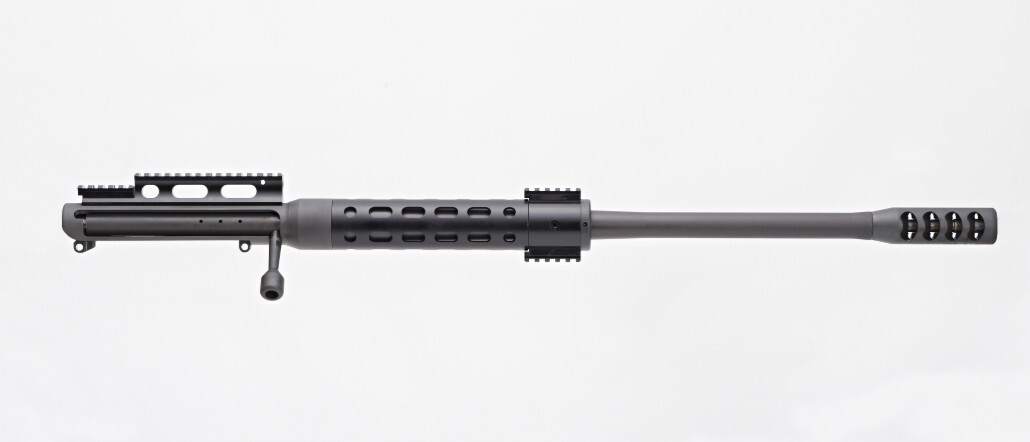
The Safety Harbor SHTF-50 uses a different path to .50 BMG. Mag-fed bolt-action upper for an AR-15 lower; 18/22/29" barrels offered. So you get big-bore power without buying a full, dedicated rifle.
It comes in three barrel lengths: 18", 22", and 29". Pick the 18" for a handier setup. Pick the 29" to squeeze out more speed. The 22" sits in the middle for a balanced feel. All versions run the same bolt-action system with magazine feed.
The best part here is comfort and habit. You already know your AR-15 controls, so this upper simply expands what you can do. The bolt action stays simple and strong. It cycles smoothly, even with a huge cartridge on board.
Storage and travel are easy. The SHTF-50 breaks down smaller than a full rifle and fits normal cases. You can swap it on and off your lower in minutes. That makes it a smart pick for tight spaces and for people who want more flexibility.
Price: $1,850 (upper only)
Features
- Mag-fed bolt action upper
- 18/22/29" variants
- Designed for AR-15 lower interface
Pros
- Most modular path to .50 ownership
- Space-efficient storage/transport
- Cost-effective vs complete rifles
Cons
- Dependent on lower quality/compatibility
- Bolt-action cadence
- Recoil/blast management depends on setup
ArmaLite AR-50A1

The ArmaLite AR-50A1 brings strong accuracy at a cost that stays within reach. This single-shot bolt action has a real name for long-range work. It punches above its class when targets sit far away.
A massive 30-inch barrel sits at the core. That length helps pull the most speed from the .50 BMG. The rifle measures about 58.5 inches from end to end and weighs 34.1 pounds. The extra weight softens recoil and steadies the gun on the bench.
ArmaLite adds a very effective muzzle brake. The big, multi-port design cuts felt recoil by a wide margin. So the shot feels calmer than you expect. Less beating on the shoulder means less fatigue. That makes it easier to hold tight groups across a long range day.
For the price, few peers match its out-of-box precision. Pair good ammo with a quality optic and you can land hits at extreme distances again and again. It is a solid doorway into serious long-range work without the top-shelf price of some rivals.
Price: $3,366–$4,500 (typical range)
Features
- Single-shot bolt action
- 30" barrel
- Very effective multi-port muzzle brake
- 34 lb rifle weight
Pros
- Strong accuracy per dollar
- Manageable recoil for caliber
- Durable, straightforward mechanics
Cons
- Single-shot slows strings
- Very long and heavy
- Needs quality support gear (rest, base, rings)
Barrett M95

The Barrett M95 takes the company's renowned .50 BMG expertise and packages it into a more compact bullpup design. This bolt-action rifle places the action behind the trigger group. It creates a shorter overall package without sacrificing barrel length.
With a 29-inch barrel and an overall length of just 45 inches, the M95 is substantially more maneuverable than conventional .50 BMG rifles. Weighing in at 23.5 pounds, it's also lighter than many competitors. This combination makes it particularly suitable for applications where space is limited.
The 5-round detachable magazine gives you follow-up capability that single-shots can't match. The bolt operation is smooth and positive, with an oversized bolt handle that's easy to manipulate even with gloved hands. Extraction and ejection are reliable, even with hot-loaded ammunition.
Currently used by military forces in 15 countries including Denmark, Italy, and Thailand, the M95's credentials are well-established. For civilian owners, it represents an excellent balance of portability, capacity, and precision in a package that's easier to transport and store than most .50 BMG rifles.
Price: $6,990 (typical market reference)
Features
- Bullpup bolt-action
- 29" barrel
- 5-round detachable magazine
- OAL 45"
- Weight 23.5 lb
Pros
- Portable for the class
- Military pedigree and robustness
- Practical capacity for duty/field use
Cons
- Bullpup trigger feel can vary
- Still heavy; needs solid support
- Pricing above many single-shots
Safety Note: Always confirm range rules and backstop suitability; .50 BMG carries far and penetrates deeply.
Ammunition—Match vs Practice
The .50 BMG round is a beast, but loads are not the same. The gap between match-grade and practice ammo grows at long range. Accuracy shifts. So does shot-to-shot repeatability. Small changes matter more as distance climbs.
Match/Precision Loads
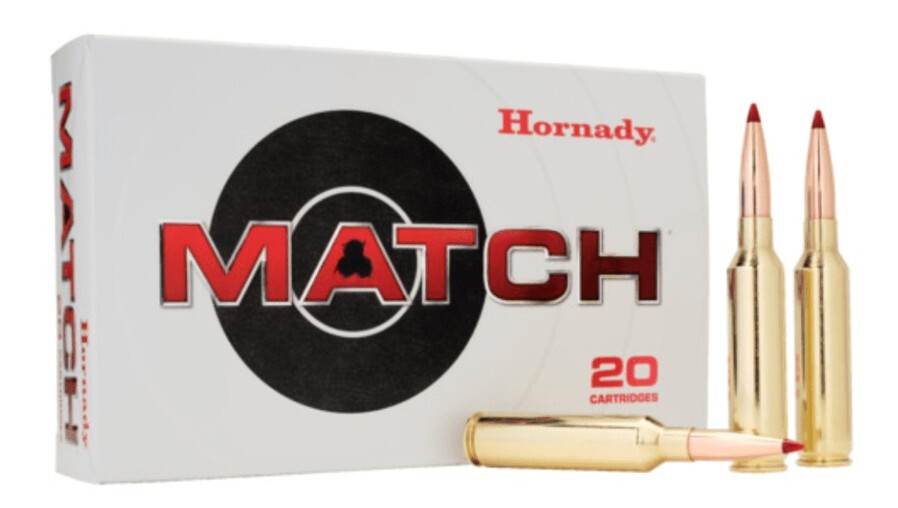
Hornady Match .50 BMG 750gr A-MAX: This premium load carries Hornady’s low-drag A-MAX bullet with a polymer tip and a boat-tail. Quality control is tight, so speeds stay steady and groups stay small. At extreme range, this round can hold supersonic flight past 2,000 yards in ideal conditions. That helps drop charts stay honest and cuts wind guesswork a bit. Price: $83/10 rounds
PMC X-TAC Match 740gr FMJ-BT: This option is a touch lighter than the Hornady round. PMC uses in-house solid brass bullets with a boat-tail for cleaner flight. The lower weight brings a higher muzzle velocity, which can help in some use cases and temps. Many report strong lot-to-lot consistency that makes data easier to trust. Price: $71/10 rounds
Range/Plinking Loads
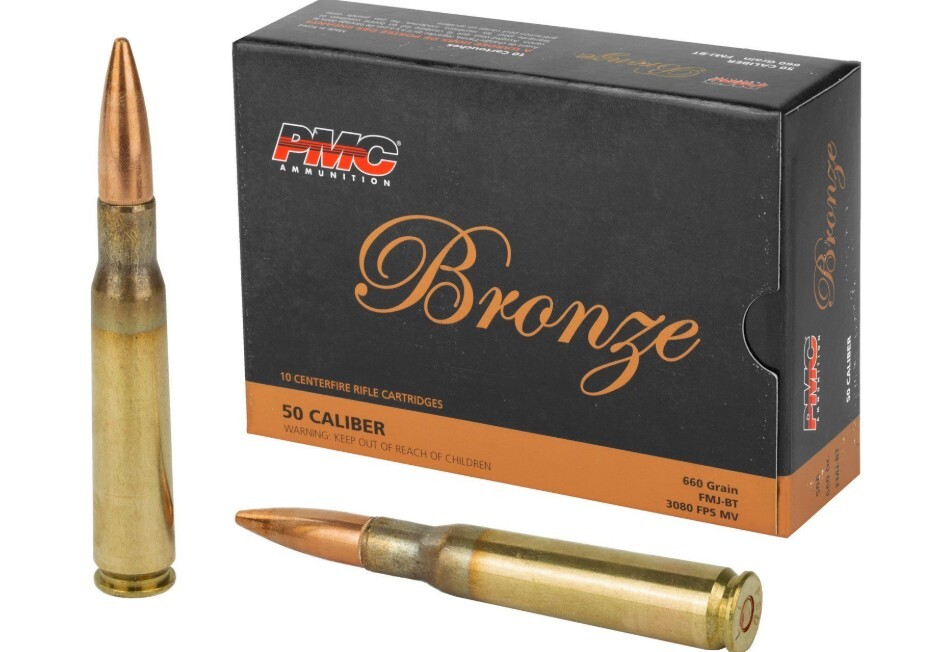
PMC Bronze 660gr FMJ-BT: For general practice and warm-ups, the Bronze line gives steady performance at about half the price of match loads. The 660-grain bullet is lighter than common match picks, so recoil feels softer and impact may shift on your target. For steel at modest ranges, this round does the job without draining your wallet. Price: $38/10 rounds
Tip: Use match ammo to build data and dope. Use plinking ammo for reps and familiarization.
| Ammo | Bullet type | Bullet weight (gr) | Use-case | Price |
|---|---|---|---|---|
| Hornady Match 750gr A-MAX | A-MAX, polymer tip, boat-tail | 750 | Match / Precision | $80–$85 / 10 (street) |
| PMC X-TAC Match 740gr FMJ-BT | FMJ-BT (solid brass projectile) | 740 | Match / Precision | $70–$75 / 10 (street) |
| PMC Bronze 660gr FMJ-BT | FMJ-BT | 660 | Range / Plinking | $38–$45 / 10 (street) |
Reloading .50 BMG
Factory ammo is costly, so many .50 BMG owners reload to cut bills and tailor their setup. The process mirrors standard rifle reloading—just bigger, heavier, and less forgiving. Plan your bench and your steps with care.
The big draw is cost. Typical factory runs $3–$8/rd depending on load; careful handloads often land $1.50–$3/rd, assuming brass reuse and bulk components. . If you shoot often, that gap turns into real savings over time.
For components, Hornady A-MAX .50 caliber projectiles stay popular. Weight and shape stay consistent from box to box, and the aero profile is proven. They share the same design used in Hornady’s factory match ammo, so you can chase that same on-target feel with your own loads.
For brass, Hornady .50 BMG cases offer strong life when treated right. With clean sizing, sane pressures, and good case lube, many reload three to five cycles before signs of fatigue show. Track each firing. Inspect necks, shoulders, and primer pockets closely. High pressure makes small flaws risky.
The bench setup takes real gear. You need a heavy-duty press built for big cases, the right shell holder, a trimmer that handles the length, and precision scales for powder charges. Add case gauges, good calipers, and a safe, repeatable workflow. Safety matters most with large-caliber work.
Setup & Ownership Checklist
Owning a .50 BMG rifle comes with unique considerations beyond the purchase price:
Legal Considerations: Laws vary widely. California bans .50 BMG rifles by definition (Penal Code §30530). Washington, D.C. prohibits .50 BMG rifles/ammunition. Illinois’ Protect Illinois Communities Act (HB5471) restricts .50-cal rifles. Always verify your current state and local rules before purchase or transport.
Optics & Mounting: You'll need a scope rated for the severe recoil of a .50 BMG. Most shooters opt for a 20-40 MOA canted base to extend elevation range for extreme distances. Use high-quality rings and follow proper torque specs—this isn't the place to save money.
Hearing Protection: Double up with both plugs and muffs. The blast from a .50 BMG is substantial and can damage hearing even with standard protection. For spotters and nearby shooters, active electronic protection is strongly recommended.
Transportation: These rifles are long and heavy. A quality hard case with wheels is practically mandatory. Some models may require custom cases due to their length or configuration.
Range Compatibility: Not all ranges can accommodate the power, noise, and safety requirements of .50 BMG rifles. Call ahead and confirm their policies before bringing your rifle.
Conclusion
The .50 BMG sits at the top end of non-NFA options in most states. Its reach and force call for care, training, and the right range. Treat it with respect every time.
Set your rifle choice to match your plan and budget. A $2,500 single-shot can bring plenty of smiles for casual days. If you chase long-range wins, higher-end builds may pay off over time.
Ammo choice matters a lot past 1,000 yards. Match bullets with strong ballistic coefficients hold speed and fight wind better. As range grows, wind drift turns into a big problem to solve.
Own it with care. Large-caliber AP/SLAP .50 BMG loads can penetrate substantial concrete and steel at distance—plan conservative backstops and stand-off every time.

PMC Bronze 50 cal 660 Grain Full Metal Jacketj
$49.99
at Pro Armory
Prices accurate at time of writing
Frequently Asked Questions (FAQs)
Is .50 BMG legal for civilians where I live?
Most states allow civilian ownership. California, Connecticut, Washington D.C., and Illinois place limits. Laws change, so check your current local rules before you buy. Your state site or attorney general page helps. A quick call to your range also points you in the right direction.
Semi-auto vs bolt: which is better for ELR?
Bolt actions usually give tighter groups at extreme long range. The locked action helps with consistency shot to shot. Semi-autos shine with faster follow-ups and often softer feel on the shoulder. Pick based on your goal—tiny groups past a mile, or quicker strings with less downtime.
How much does a typical .50 BMG shot cost?
Factory match ammo runs about $4–$8 per round. Practice loads often land near $3–$5. Reloading cuts that to roughly $1.50–$3 once you cover the gear. Brass life, powder buys, and bulk bullets matter, so plan ahead.
What barrel length should I choose for 1-mile shooting?
A 29–30" barrel hits a sweet spot for speed and balance. You gain velocity for stable flight at long range. You also keep weight and handling in check for field use. Longer tubes can add speed, yet they add mass and swing slowly.
Can I safely shoot steel with .50 BMG at my range?
That depends on plate rating, thickness, distance, and angle. Many AR500 targets do not carry a .50 BMG rating, especially up close. Ask the maker for the exact rating and stand-off. Use deep angles and long distances if a plate is approved.
Does reloading meaningfully improve accuracy and cost?
Yes on both counts. You can save about fifty to seventy percent per shot with a good setup. Tailored loads that match your rifle often cut group size by a quarter to a half. Careful brass prep and repeatable seating bring gains fast.
About the Author
This article comes from the ProArmory writing team. We pulled current research and open guides from sources such as the Journal of Military Science, Firearms News, and the National Shooting Sports Foundation. We also read official defense publications and respected firearm guides from the ATF, NRA, and maker manuals to keep details straight.
Disclaimer:This guide is for education only. Always follow all federal, state, and local laws on firearm ownership and use. Stay safe on and off the range. ProArmory accepts no liability for actions based on this information.




 Pro Armory Editorial Team
Pro Armory Editorial Team